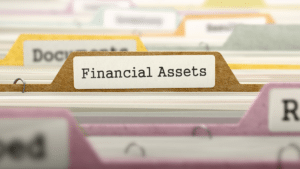
Today’s unpredictable economy is creating all kinds of fundraising and staffing anxieties for nonprofit organizations. Most nonprofits already understand that diversified, stable revenue streams that are predictable and scalable are key to safeguarding their missions and keeping up the good work.
But this truism is certainly easier said than done. Where do you start? We recommend diversifying your non-cash fundraising efforts.
Non-cash giving is on the rise, and it pays—research has shown that nonprofits that prioritize diverse non-cash forms of giving grow six times faster than those that don’t.
As a nonprofit fundraiser, what should you know about other forms of giving that your nonprofit hasn’t yet pursued? What types of non-cash gifts should be on your radar and incorporated into your development strategy? Let’s take a look.
The Benefits of Non-Cash Giving
Seeking more than just one-time or recurring gifts of cash brings a number of valuable benefits for both your nonprofit and your donors, depending on the specific type of gift in question.
- For nonprofits, building pipelines for non-cash giving brings revenue diversification and, in many cases, greater predictability. New forms of giving also allow you to reach new pools of donors who have different giving capacities and motivations, and they also help your nonprofit come off as modern, adaptable, and savvy. Depending on their solicitation contexts, many non-cash gifts are also unrestricted. Working closely with donors and building relationships with them to establish these gifts will also boost engagement and loyalty.
- For donors, the benefits they can enjoy from non-cash giving will vary greatly based on the specifics of their gifts. Many have valuable tax benefits, which is often a driving motivator, but non-cash giving can also hold personal value, as with planned gifts.
Understanding the specific benefits of the different types of gifts you pursue will be important for making a compelling case to donors, both in terms of their own benefits and the impact that their gifts will have on your mission.
Common Types of Non-Cash Gifts
“Non-cash gifts” is a fairly diverse group. It can be summed up as including any donations that aren’t one-time, pledged, or recurring gifts of cash paid straight from a donor’s day-to-day or saved (and not actively managed) funds.
We can sort them into two general groups: gifts of assets and planned gifts.
Gifts of Assets
These include gifts of appreciated assets set aside for saving and growing, sometimes with specific philanthropic purposes. They can include:
- Stock. Donors can gift your nonprofit with shares of stock of public and private companies. Your nonprofit will then need to liquidate the shares.
- Cryptocurrency. Crypto is a growing form of non-cash giving that can help your organization reach younger donors with high giving capacities.
- Property. Gifting property is a longstanding way to give that, while complex and requires careful due diligence, can be extremely beneficial for your mission.
- QCDs. Donors can designate your nonprofit as a recipient of a qualified charitable distribution from their taxable IRA instead of taking required minimum distributions.
- DAFs. Donor-advised funds are another rapidly growing type of giving in which donors disburse grants directly from a managed fund specifically set aside for charitable giving.
Planned Gifts
Planned gifts are made as part of a donor’s financial or estate plans, and they’re often deferred until the donor passes away. There’s some overlap with gifts of assets since planned gifts often include donated or liquidated assets. It can be helpful to break the common types of planned gifts down into three groups:
- Gifts for the future. These gifts are deferred until the donor passes away.
- Bequests. The most common form of planned giving, a bequest involves a donor adding your nonprofit to their will as a recipient of a dollar amount or portion of their estate.
- Beneficiary designations. A donor can name your nonprofit as a beneficiary of their life insurance policy.
- Retirement accounts. Donors who’ve saved plenty of money for retirement can gift unused funds from accounts to your nonprofit upon their passing.
- Gifts that pay donors back. These are gifts set up as part of a financial plan to generate income for the donor while reducing their tax payments.
- Charitable gift annuities. A gift of cash or securities is given to your nonprofit in exchange for a fixed income payment from it. The gift is then saved and invested, and your nonprofit receives the remaining funds when the gift’s terms are up.
- Charitable remainder annuity trusts. Donors set up trusts through which to give annuities. Both they and your nonprofit receive fixed payments from the trust until its terms are up.
- Charitable remainder unitrusts. A unitrust works like an annuity, but its payments to the donor are variable, determined by the fund’s current value, and donors can continue contributing to it after it’s established.
- Pooled-income funds. This type of charitable trust is set up by a nonprofit to manage and invest batches of large donations from multiple donors, who receive variable income payments as if it were a mutual fund. The nonprofit then receives a donor’s shares upon their passing.
- Other tax-savvy planned gifts. This third category includes gifts that may be rarer but offer excellent opportunities for the right donors.
- Charitable lead trusts. A donor contributes to a charitable trust, from which the nonprofit receives a fixed payment. Remaining funds at the end of the terms return to the donor, making this a way for wealthy donors to reduce estate taxes while ensuring heirs can still inherit funds and assets.
- Retained life estates. A donor transfers ownership of a property to a nonprofit but retains the right to use it until the end of the agreement’s terms. This allows wealthy donors to simplify their estate settlement plans, give back, and reduce estate taxes.
Planned giving is a diverse field, and many types of planned gifts are fairly complex. If you want to set up a stronger planned giving program, we recommend starting by focusing on bequests but building a prospecting process that will allow you to identify other opportunities over time.
Tips for Promoting Non-Cash Giving
Diving into any new form of giving can be a challenge for fundraisers. Here are a few best practices to keep in mind:
- Be prepared to discuss the benefits. You don’t need to (and shouldn’t) offer donors explicit financial or estate planning advice, but you should explain how different types of gifts will benefit both them and your nonprofit. Learn more about this and other important early steps for diversifying your revenue sources with the FreeWill guide to creating a planned giving program.
- Survey your donors to gauge interest. Before investing heavily in promoting one form of giving, it’s a smart move to first determine where your efforts will go the furthest. Some donors might have already set up bequests without notifying you, or some might have donor-advised funds that you weren’t aware of. Other donors may be interested in gifting appreciated assets that they never before considered. Survey results can be a helpful basis for updating your development strategies.
- Iterate on your existing development processes. You don’t need to start from square one to start asking for new types of gifts. Follow the same prospecting, cultivation, solicitation, and stewardship process you use for large cash gifts, but learn what you’ll need to look for in non-cash prospects. Update your donor personas, qualification criteria, and segmentation strategies, then keep refining them as you secure gifts and learn more from your performance.
- Important note – Understand how the donation processes for different types of gifts work and where you’ll need to fill any gaps. For example, stock, crypto, and DAF gifts are often reported to nonprofits anonymously by third parties that facilitate the transactions, so you’ll need to build a process to ensure these donors self-report the donations to you, as well.
- Important note – Understand how the donation processes for different types of gifts work and where you’ll need to fill any gaps. For example, stock, crypto, and DAF gifts are often reported to nonprofits anonymously by third parties that facilitate the transactions, so you’ll need to build a process to ensure these donors self-report the donations to you, as well.
- Create the donor-facing resources you’ll need. To sustain your efforts, you’ll need to broadcast them. One huge benefit of diverse gifts is that they reach diverse audiences with wider ranges of demographics, capacities, and motivations than major gifts of cash. Add new types of gifts to your Ways to Give page, and consider going further by creating a centralized digital location to educate donors about their non-cash options. Integrate mentions of various types of giving into your regular communications, with more targeted campaigns to specific segments as you learn more about them.
Branching out into completely new types of fundraising can be an overwhelming prospect, but this crash course should hopefully give your organization an idea of where you’d like to first focus your efforts. With research, preparation, and the right tools on your side, you can set up a new giving program to keep improving and strengthening over time.
 Patrick Schmitt, Co-CEO of FreeWill
Patrick Schmitt, Co-CEO of FreeWill
Patrick Schmitt and fellow FreeWill co-CEO Jenny Xia founded at Stanford University’s Graduate School of Business in 2016. FreeWill’s charitable giving platform makes it easier for nonprofit fundraising teams to unlock transformational gifts, and to date has generated over $6.6 billion in new gift commitments for thousands of nonprofit organizations. Patrick hosts FreeWill’s popular webinar series, educating thousands of nonprofit fundraising professionals each month about planned and non-cash giving strategies.
Before FreeWill, Patrick was the Head of Innovation at Change.org, where he helped grow the organization to 100 million users in four years. Prior to that, he ran email marketing for President Obama and served as Campaign Director for MoveOn.org.
